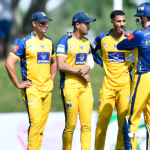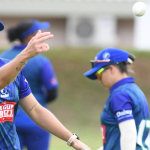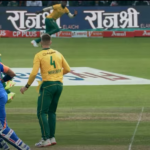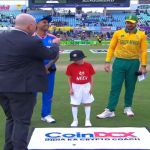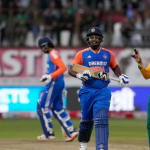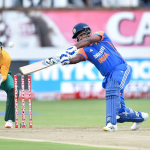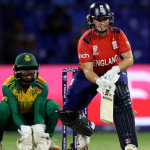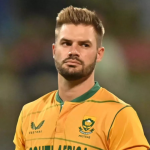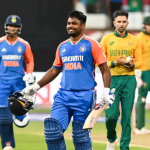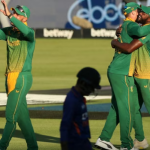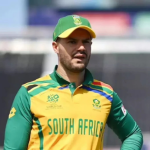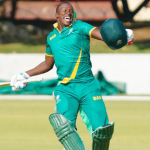The Stark Differences Between South Africa and India In Cricket. The world of cricket has long been characterized by rivalries, successes, and failures, with nations vying for supremacy on the field. Among these, South Africa and India stand out, each with its own unique story and trajectory. The men’s T20 World Cup final in Barbados this past June served as a crucial turning point for both teams, heralding contrasting paths in international cricket. While South Africa’s journey has been marred by struggles, India has surged ahead with remarkable success.
Recent Performances
Since the T20 World Cup final, South Africa has faced a harsh reality, losing five out of their last six T20 matches. In stark contrast, India has emerged victorious in 10 of their last 12 T20Is, tying another. This disparity raises important questions about the dynamics of both teams and what contributes to their respective performances.
Reeza Hendricks, a key player for South Africa, expressed his frustration during a recent press conference, stating, “I don’t know what to put it down to. But we haven’t had most of the players who played in that game. We gave opportunities to new players in the last couple of series. We didn’t get the results we wanted, but there were a lot of learnings.” Hendricks’ remarks highlight the significance of personnel changes and the need for continuity in a successful cricketing unit.
Key Players Missing
Indeed, of the XI players South Africa fielded in the T20 World Cup final, only Hendricks, Aiden Markram, and Tristan Stubbs participated in the subsequent series against the West Indies in Trinidad and against Ireland in Abu Dhabi. The only success South Africa could muster during these outings was an eight-wicket victory over Ireland. Notably, they played without several World Cup finalists, including Quinton de Kock, Heinrich Klaasen, David Miller, Marco Jansen, Keshav Maharaj, Kagiso Rabada, Anrich Nortje, and Tabraiz Shamsi.
On the flip side, India’s cricketing landscape showcases a different narrative. Despite the absence of key players from their T20 World Cup final squad in subsequent series, India has managed to maintain a robust performance. Out of the XI that played in the World Cup final, only three participated in the series in Zimbabwe in July. However, India’s only loss since the final was a narrow defeat to Zimbabwe by 13 runs. This resilience speaks volumes about the depth and quality of India’s cricketing talent.
Depth of Talent
One of the striking differences between South Africa and India lies in the depth of their cricketing talent. In the 2023/24 Ranji Trophy, a staggering 623 players participated across 32 teams, showcasing India’s extensive domestic talent pool. In contrast, Cricket South Africa’s (CSA) first-class tournament fielded only 268 players across 15 teams. This translates to India having more than double the active first-class players compared to South Africa.
The implications of such disparity are profound. South Africa’s population constitutes a mere 4.42% of India’s, with India boasting a staggering 1.4 billion inhabitants compared to South Africa’s approximately 60 million. In economic terms, India’s GDP is 9.8 times larger than South Africa’s, a factor that significantly influences the resources allocated to sports development and infrastructure.
The Impact of Domestic Competitions
The structure and investment in domestic cricket play a crucial role in shaping a nation’s success on the international stage. India’s thriving cricket ecosystem, which includes various leagues and competitions, nurtures talent and provides players with ample opportunities to hone their skills. Conversely, South Africa’s domestic setup has faced challenges in recent years, leading to questions about player development and succession planning.
Learning from Experience
Reeza Hendricks articulated a sentiment that resonates with many South African players: the need for learning and adaptation. As South Africa prepares to face India in a series of T20 matches, they find themselves at a crossroads. The team has the opportunity to regroup and leverage the experiences gained from recent series, particularly in terms of integrating new players and refining their strategies.
Table 1: Recent T20I Performances of South Africa and India
| Country | Matches Played | Wins | Losses | Ties | Win Percentage |
|---|---|---|---|---|---|
| South Africa | 6 | 1 | 5 | 0 | 16.67% |
| India | 12 | 10 | 1 | 1 | 83.33% |
The Upcoming Challenge
As the cricketing world eagerly anticipates the clash between South Africa and India at Kingsmead, there is much at stake. For South Africa, this series represents a chance to rebuild and demonstrate resilience. The series consists of four T20 matches, and it is crucial for the Proteas to capitalize on home advantage and deliver strong performances.
India, on the other hand, arrives with a wealth of experience and confidence. With several players having participated in multiple international matches since the World Cup, the Indian squad boasts depth and adaptability. Notably, seven players from both teams who participated in the World Cup final will feature in this upcoming series.
Building Towards the Future
For South Africa, the key lies in effective player management and strategic planning. The infusion of young talent, combined with the experience of established players, can create a balanced and competitive side. It is essential for the management team to focus on long-term goals while also aiming for immediate success in the upcoming matches.
India’s ability to maintain a strong squad despite the absence of certain key players highlights their effective talent management and player development strategies. The emphasis on nurturing talent through robust domestic competitions has allowed them to remain competitive on the international stage.
Table 2: Key Players to Watch in the Upcoming Series
| Player | Team | Role |
|---|---|---|
| Reeza Hendricks | South Africa | Batsman |
| Aiden Markram | South Africa | All-rounder |
| Quinton de Kock | South Africa | Wicketkeeper/Batsman |
| Virat Kohli | India | Batsman |
| Jasprit Bumrah | India | Fast Bowler |
| Rohit Sharma | India | Batsman/Captain |
Conclusion
The contrasting paths taken by South Africa and India in the aftermath of the T20 World Cup final serve as a stark reminder of the challenges and opportunities that lie ahead. For South Africa, the road to recovery will require introspection, resilience, and a commitment to growth. With a blend of experienced players and emerging talent, the Proteas have the potential to reclaim their position as a formidable force in international cricket.

